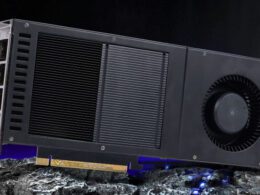Seagate Technology has embarked on a collaboration with Sony aimed at advancing hard disk production. Sony, recognized for its proficiency in laser diode production, will manufacture nanophotonic lasers for Seagate’s recording heads, essential for increasing storage capacity.
Seagate Technology launched the Mozaic 3+ HDD platform and introduced the first 30 terabyte (TB) drives based on it at the beginning of 2024. A fundamental feature of this technology is a Heat Assisted Magnetic Recording (HAMR) mechanism that employs a built-in laser diode in the recording head to heat a 35 nm magnetic grain up to 400°C. Traditionally, magnetic heads for Seagate were designed by TDK. However, Sony is now slated to play an active role in this process.
According to Japanese sources, Sony’s Semiconductor Solutions division will commence production of specialized laser diodes in May, investing a total of about 5 billion yen ($33 million) in plants in Miyagi and Thailand. New production lines will be installed in these factories. Seagate aims to accelerate the release of hard drives with capacities of 30TB and more using these new diodes as technology improves.

Analysts opine that the expansion of offerings in the field of generative artificial intelligence is rapidly boosting demand for data processing centers. The German research company Statista, for instance, calculated that global data production will reach at least 181 zettabytes (ZB) by 2025, a leap of 90% from 2022. The real issue, however, isn’t a shortage of hard drives but the need for land, buildings, and sources of energy, constituting a different facet of the problem.





